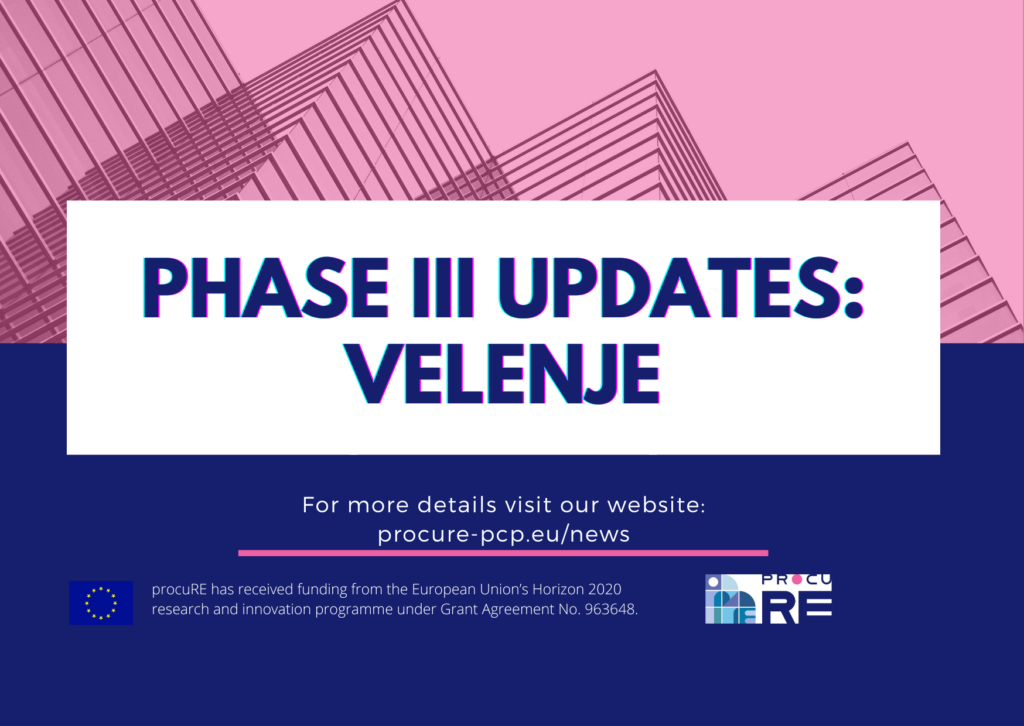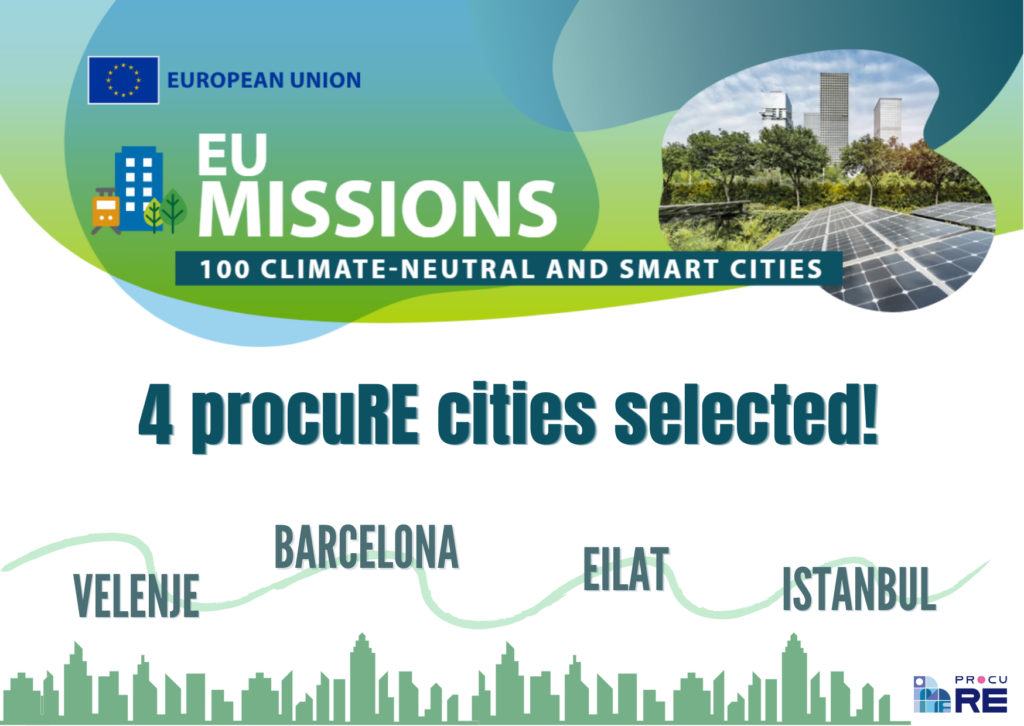Velenje, Slovenia
Velenje pilot site - Elementary school Vinska Gora
Climate targets and deadlines
The City municipality of Velenje (MOV) is located in North-Eastern Slovenia (part of the Savinjska statistical region, NUTS 3: SI034), covers 84 square kilometres and is home to about 33 thousand inhabitants. It`s one of Slovenia’s eleven urban municipalities, which function as regional centres. The City of Velenje is the country’s 6th largest city as well as the industrial, economic as well as cultural centre of the region with important administrative, educational, commercial and other functions.
Established as late as only 60 years ago (1959), the city was founded on a long tradition of coal mining for supplying the thermopower plant in Šoštanj which remains a defining factor to this day. MOV has been active in various fields related to sustainable development for several decades and has implemented a number of investment and capacity development projects in renewable energy, energy efficiency and sustainable mobility.
It was the first municipality in the country to fully adhere to the Covenant of Mayors initiative with a validated Sustainable Energy Action Plan (SEAP), committed to reduce greenhouse gas emissions with elaborated measures. MOV in cooperation with key regional stakeholder organizations intends to maintain their position and relevance of the area (Šaleška valley) in the context of the regional and national energy supply, mainly through strategic development of investment projects targeted at the application of sustainable energy alternatives, where energy renovation has been considered as an essential driver and platform of the energy transition for over a decade.
The strong cooperation and established connections with regional energy producers – energy companies Thermal power plant Šoštanj (Termoelektrarna Šoštanj TEŠ d.o.o.) and Velenje mine (Premogovnik Velenje d.d.), both subsidiaries of Holding of Slovenian Powerplants (HSE d.o.o.), the largest producer of renewable energy on the national level – provides MOV with great capacity to proactively engage in the implementation of promising sustainable projects that provide a wide array of environmental, socio-economic and other relevant benefits.
The strategic outlook, key national targets, milestones and local targets for the period after 2020 until 2030 is primarily designated by the following:
National energy and climate plan (Nacionalni energetski in podnebni načrt – NEPN), 2020
- Reduce GHG emission by 20% until 2030 in non-ETS sectors in accordance with the EU decree/regulation 2018/842 on binding annual greenhouse gas emission reductions by Member States from 2021 to 2030 contributing to climate action to meet commitments under the Paris Agreement and amending Regulation (EU) No 525/2013.
- Reduce the use of fossil fuels and import dependency until 2030 by phasing out coal at least by 30% in line with the provision of the Just Transition.
- Increase the share of renewable energy sources in final energy use to at least 27% until 2030, whereby 2/3 of energy used in buildings is renewable, achieve a 43% supply from renewables in the energy sector, achieve a 41% supply from renewables in heating and cooling, 30% in industry and 21% in transport.
- Improve energy efficiency in all sectors by at least 35%.
- Ensure that final energy use is capped at 54,9 TWh (4717 ktoe) – 73 TWh (6356 ktoe) primary energy
- Reduce final energy use in buildings by at least 20% and total GHG emission by at least 70% until 2030 compared to 2005 baseline.
Strategy for mobilizing Investment in the energy renovation of buildings for public buildings up to 2030 (Dolgoročna strategija za spodbujanje naložb energetske prenove stavb – DSEPS), 2018*
- Achieve a renovation rate of 3% annually in buildings owned and operated by public administration until 2023 for all buildings with a surface over 250 m2.
- Renovate 1,8 million m2 of public sector buildings until 2023 relative to 2015 (originally about 200.000 per annum, due to the delay in implementation the threshold is to be achieved in 7 instead of 9 years).
Long-term Climate Strategy 2050 – draft (Dolgoročna podbnebna strategije Slovenije do leta 2050), 2020
- Achieve net zero GHG emissions and climate neutrality (sources are equal to or less than existing sinks) until 2050 in line with the commitments of the Paris climate agreement.
- Ensure that final energy use is capped at a maximum 40 TWh in 2050 and 47 TWh until 2040. Additionally, use of primary energy should not exceed 65 TWh IN 2040.
- Share of renewable energy in supply will achieve at least 60% until 2050 of which energy supply for transport will be 65% renewable, at least 50% in heating and cooling and at least 80% in the final gross energy use.
Additional objectives and milestones are outlined in local energy policy which include the Sustainable energy action plan (Trajnostni energetski akcijski načrt), 2011 and the Local energy concept of the City municipality of Velenje (Lokalni energetski concept Mestne občina Velenje), 2012, which indicate commitments for reducing total energy consumption in buildings, increase the share of renewable energy sources as well as to increase motivation, awareness and energy awareness of the importance of energy efficiency and the promotion of renewable energy sources (targets outlined to the period until 2020, the documents are to be revised in 2022).
* Based on the DSEPS revision from 2018 stipulating operational objectives until 2023 with a draft new version of the long-term strategy until 2050 is in in the finalization process.
Goals and challenges for buildings along the road
Buildings represent one of the essential pillars of a successful energy transition that will facilitate the achievement of highly ambitious objectives and commitments in the area of energy efficiency and reduction of GHG.
One of the main challenges that is presently preventing wider uptake of deep renovation of the public building stock is long-payback periods for measures, particularly on buildings thermal envelopes. The majority of buildings in Velenje are currently supplied through the district heating systems from the Thermal power plant Šoštanj whereby 316 GWh of thermal energy was delivered trough the network in 2019 that required about 82 thousand tonnes of locally sourced lignite. While the installation of the modern ultra-super critical 600 MW unit 6 greatly reduced negative environmental impacts on the region making the Šaleška valley one of the cleanest in terms of air quality in colder months (due to the absence of individual heating devices), the targets on GHG emission reductions most notably enforced by the rising price of emission allowances will not allow for an economically sustainable energy supply over the long-term. The Savinjsko-šaleška valley is one of 2 coal intensive regions in transition from Slovenia, which is now deeply characterized and influenced by the preparation of territorial transition plans of the Just Transition mechanism.
Achieving a sustainable supply of energy while meeting emission reduction targets over the medium-term and avoiding negative wider impacts on socio-economic structures while doing so will require a massive paradigm shift in the way energy is generated and utilized. The substitution of coal will depend above anything else on introducing new innovative technologies allowing for the highest utilization of locally available renewable energy sources, whereby buildings are viewed as a priority.
How procuRE slots into this story and how it might help to achieve above
The procuRE project emphasizes the innovative and ambitious character of solving climate and other related environmental challenges of the Šaleška valley, which is something that the City municipality of Velenje together with regional stakeholders was forced to take on decades ago, mostly because of the degrading impacts of energy production and industry. The project will provide direct access to international networks of industry and research organizations, that will jointly affirm the undiscovered potentials of energy renovation and how buildings can become a part of the solution (energy source) rather than a problem (energy sink) when addressing climate change mitigation and energy independence. Most prominently, the pilot in POŠ Vinska Gora will serve as a knowledge transfer platform trough which project promoters will receive new capacity to drive energy renovation investment with new technologies in the 2021 – 2027 programming period. procuRE will precede the ambitions of the City municipality of Velenje and several expert organizations within their network in the context of developing net-positive energy communities derived from sustainable building materials and user engagement as one of the key investment areas planned for the Just Transition.

News & Events
November 15, 2024

Innovating Public Building Renovations: Insights from procuRE’s policy paper
April 24, 2024

phase III progress update in Velenje
May 20, 2022

4 procure cities selected for EU Mission on climate Neutrality
Data Sources and Links
Velenje Slovenija (velenje-tourism.si)
Celoviti nacionalni energetski in podnebni načrt (NEPN 5.0), 28.2.2020 (energetika-portal.si)
Long-Term Strategy for Mobilising Investments in the Energy Renovation of Buildings – Policies – IEA
Osnutek Dolgoročna podnebna strategija Slovenije do leta 2050 (gov.si)
